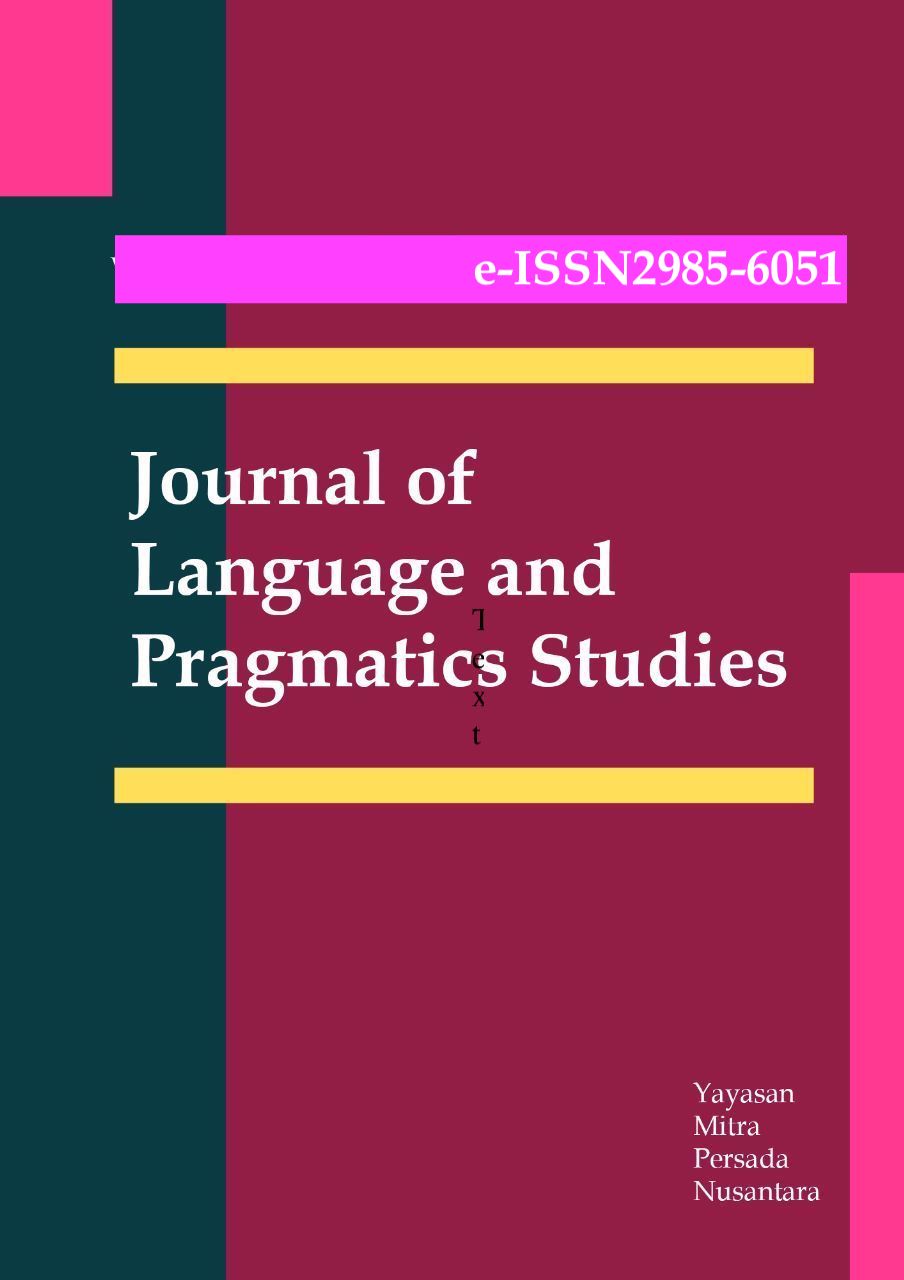The experimental pragmatics: A review of language constructing and interpreting
DOI:
https://doi.org/10.58881/jlps.v2i2.30Keywords:
cognitive expectations, empirical pragmatics, psychology of language, practical languageAbstract
In the field of empirical pragmatics, a significant amount of research is focused on testing empirical hypotheses derived from the study of linguistic and intellectual pragmatics. Most of this study is centered on analyzing the components of conveyed meaning that Information is "inferred" rather than grasped via linguistic "coding" processes. After solely linguistic meanings have been accessed or computed, pragmatic meanings are said to manifest themselves following this approach. The purpose of the present study is to dramatically broaden the applicability of exploratory pragmatic research by calling for a much greater emphasis on the complete pragmatics of language use. People's capacity to develop and interpret language in context and real-time is hindered when pragmatic considerations are always present. The field of experimental pragmatics has to pay more attention to the particulars of practical experience. This may be accomplished by taking a more in-depth look at the participants of our research, the precise tasks used to evaluate understanding, and the complex meanings that people interpret in various circumstances. The theoretical analysis of the different physiological, linguistic, and environmental has been analyzed that go into every circumstance of meaning construction is required to fully understand the countless of specifics that make up human pragmatics.
References
Abney, D., Dale, R., Kello, C., and Louwerse, M. (2018). The burst and lulls of multimodal interaction: temporal distributions of behavior reveal differences between verbal and non-verbal communication. Cogn. Sci. 42, 1297–1316. https://doi.org/10.1111/cogs.12612
Caffarra, S., Motamed Haeri, A., Michell, E., and Martin, C. (2019). When is irony influenced by communicative constraints? ERP evidence supporting interactive models. Eur. J. Neurosci. 50, 3566–3577. https://doi.org/10.1111/ejn.14503
Campbell, J., and Katz, A. (2012). Are there necessary conditions for inducing a sense of sarcastic irony? Discourse Process. 49, 459–480. https://doi.org/10.1080/0163853x
Clark, H. (1996). Using Language. New York, NY: Cambridge University Press
Colston, H. L. (2019). How Language Makes Meaning: Embodiment and Conjoined Antonymy. New York, NY: Cambridge University Press
Cummings, L. (2019). “Clinical pragmatics,” in Oxford Handbook of Pragmatics, ed. Y. Huang (New York, NY: Oxford University Press), 346–361.
Gibbs, R. (1994). The Poetics of Mind: Figurative Thought, Language, and Understanding. New York, NY: Cambridge University Press.
Gibbs, R. (2006). Embodiment and Cognitive Science. New York, NY: Cambridge University Press
Gibbs, R. (2010). “The wonderful, chaotic, creative, heroic, challenging world of researching and applying metaphor: a celebration of the past and some peeks into the future,” in Metaphor in the Real World, ed. L. Cameron (Amsterdam: Benjamins), 3–17.
Gibbs, R. (2017). “Metaphor and dynamical systems,” in Routledge Handbook of Metaphor and Language, eds V. Koller, E. Semino, and Z. Demjén (London: Routledge), 56–70.
Gibbs, R. (2019). “Experimental pragmatics,” in Oxford Handbook of Pragmatics, ed. Y. Huang (New York, NY: Oxford University Press), 310–325.
Gibbs, R., and Santa Cruz, M. (2012). Temporal unfolding of conceptual metaphoric experience. Metaphor Symb. 27, 299–311. https://doi.org/10.1080/10926488.2012.716299
Hollers, J., and Levinson, S. (2019). Multimodal language processing in human communication. Trends Cogn. Sci. 23, 639–652. https://doi.org/10.1016/j.tics.2019.05.006
Huang, Y. (ed.) (2019). Oxford Handbook of Pragmatics. Oxford: Oxford University Press.
Jucker, A., Schneider, K., and Bublitz, W. (eds) (2018). Methods in Pragmatics. Berlin: DeGruyter.
Kecskes, I. (2014). Intercultural Pragmatics. New York, NY: Oxford University Press.
McClelland, J., Mirman, D., Bolger, D., and Khaitan, P. (2014). Interactive activation and mutual constraint satisfaction in perception and cognition. Cogn. Sci. 38, 1139–1189. https://doi.org/10.1111/cogs.12146
McRae, K., and Matsuki, K. (2013). “Constraint-based models of sentence processing,” in Current Issues in the Psychology of Language: Sentence Processing, ed. R. van Gompel (New York, NY: Psychology Press), 51–77.
Noveck, I. (2018). Experimental Pragmatics: The Making of a Cognitive Science. New York, NY: Cambridge University Press.
Paxton, A., and Dale, R. (2017). Interpersonal movement synchrony responds to high-and-low conversational constraints. Front. Psychol. 8:1135. https://doi.org/10.3389/fpsyg.2017.01135
Raczaszek-Leonardi, J., and Kelso, S. (2007). Reconciling symbolic and dynamic aspects of language: toward a dynamic psycholinguistics. New Ideas Psychol. 26, 193–207. https://doi.org/10.1016/j.newideapsych.2007.07.003
Shockley, K., Richardson, D., and Dale, R. (2009). Conversation and coordinative structures. Top. Cogn. Sci. 1, 305–319. https://doi.org/10.1111/j.1756-8765.2009.01021.x
Sperber, D., and Wilson, D. (1995). Relevance: Communication and Cognition. London: Blackwell.
Downloads
Published
How to Cite
Issue
Section
License
Copyright (c) 2023 Zanyar Nathir Ghafar

This work is licensed under a Creative Commons Attribution 4.0 International License.



